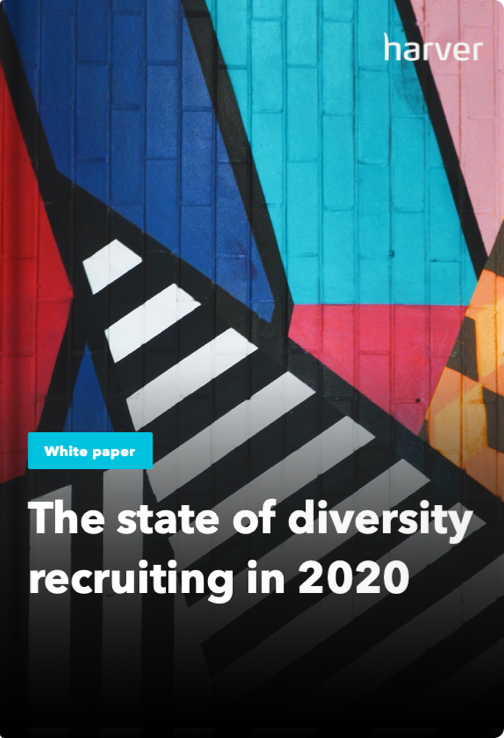Today, most companies aspire to have a diverse workforce because of the numerous benefits: increased productivity, accelerated profits, enhanced creativity, improved company reputation, to name a few.
But what if you’re in an industry that relies on high-volume recruitment like BPOs and call centers? What can you do to meet your diversity hiring goals?
How do you increase diversity in your talent pool?
This article will tackle ways you can measure your company’s DEI efforts and best practices for diversity recruitment when you need to ramp up hiring.
What’s in?
Like what you see?
Don’t miss out. Subscribe to our quarterly digest to get the latest TA and TM resources delivered right to your inbox.
How diversity is measured in the workplace
Workforce diversity means the differences among your staff by age, cultural background, physical abilities and disabilities, race, religion, gender, and sexual orientation.

So how do you evaluate diversity within your company?
For recruitment, you can measure diversity by comparing the number of applicants for vacancies from underrepresented groups versus the potential pool of applicants. You can also check the percentage of your diverse employees and evaluate it against the company and industry benchmarks.
For employee engagement and retention, compare the number of employees from diverse groups versus those who are not members of a diverse group:
- Development – track learning and development opportunities
- Pay and Benefits – assess financial and non-financial incentives
- Promotion – career advancement
- Engagement – satisfaction ratings
- Retention – the average tenure
Data from these metrics should be collected and analyzed to determine if there are cases of recruitment biases so you can find ways to lessen or eliminate them.
Diversity and inclusion in the workplace are among the toughest issues facing hiring managers today. Knowing the latest DE & I statistics will give you insights into the complex nature of this hiring process:
- Glassdoor polls revealed that 76 percent of job seekers and employees said a diverse workforce was vital for them when evaluating job opportunities and companies.
- In a study by the National Bureau of Economic and Research, job seekers who have “distinctively Black names” have lower chances of hearing back from firms they applied to than applicants who don’t.
- In research by Atlassian, almost half of employees believe their company needs to improve the diversity of gender, race & ethnicity, and 40% of employees believe their companies should increase diversity in terms of sexual orientation.
- As of February 2021, Yahoo reported that only four Fortune 500 companies have a chief executive officer who is Black.
- Fortune published an article that just over 8% of Fortune 500 CEOs are women.
- McKinsey and Company reported that women of color account for only 4% of C-Suite leaders, and for every 100 men promoted manager, only 86 women are promoted.
The state of diversity recruiting in 2020
How to hire more diverse candidates
Here are 5 practical tips to boost your volume hiring of diverse candidates:
Use social media to showcase diversity and inclusion
If you want to reach as many diverse candidates as possible anytime, anywhere, social media is the way to go.
Scale up your hiring of a diverse workforce by doing the following initiatives:
1. In your social media pages, showcase images and videos of your staff that belong to various groups in your workforce. See below categories of how you can represent them:
- Ages: A range of ages from entry-level worker to your C-Suite employee
- Genders: Women, men, transgender, non-binary, and other genders
- Races/ethnicities: African/Black, Hispanic/Latinx, Asian, Middle Eastern, Caucasian/white, mixed-race, etc.
- Abilities: People with a wide array of different physical and mental abilities or disabilities
Invite these employees from different demographics to share their company testimonials and stories on your LinkedIn, Facebook and IG channels.
2. Advertise your vacancies to help meet your diversity and volume hiring goals.
Facebook has a ‘Jobs’ feature to help recruiters target their job ads to reach as many qualified diverse candidates as possible. Applications are pre-populated with demographic details from applicants’ profiles like age, past job titles, educational background, employer information, and interest.
Use software specific to diversity hiring
High-volume recruitment of diverse candidates is a massive challenge for hiring managers. Fortunately, there are diversity recruitment tools available to address this concern:
- Blind resume screening – hides candidate information that may influence unconscious bias like candidate’s name, age, gender, race, educational background, and location. With recruitment software, you can automate the hiring process, implement objective criteria for candidate selection, and eliminate the headache of manually sifting and screening through hundreds of resumes.
- Blind interviews – ramp up your candidate interviewing process by emailing annonymized written Q & A. Other options include live messaging and chatbots, which save recruiters’ time and expand candidate outreach, ideal for hiring at scale.
- Pre-employment assessments – evaluate candidates’ personality traits and cognitive abilities to respond in certain situations. These assessments make it easier for recruiters to assess applicants’ skills and competencies without introducing unconscious biases that might skew candidate selection. It also ensures each candidate is treated fairly — regardless of their background or work experience.
Harver worked with a global auditing giant to redesign its recruitment process for entry-level hires. Using our volume hiring software to tackle diversity recruitment, we helped this firm increase the number of female hires by 44%.
Create job descriptions that promote a diverse and all-inclusive workplace
You can use the following checklist to help you craft job advertisements that would attract diverse applicants:
1. Use gender-inclusive language. When referring to candidates, use ‘you’ instead of ‘he/she’ to avoid driving away qualified individuals from sending their applications.
For example, you may be wondering why you have very few female applicants for your software developer position. Maybe the job description was written with masculine language that makes it hard for female software developers to see themselves in the role and working for your company.
Use writing platforms like Gender Decoder, Textio, or Applied to make sure you use neutral language in your job adverts.
2. Unless they are crucial, don’t put too much emphasis on the educational background. While Ivy League institutions are known to produce the best and brightest students, there is no guarantee that students from these institutions will be your ideal employees.
3. Focus on the actual responsibilities of the role instead of publishing a laundry list of unnecessary requirements. Sometimes, having a lost list of conditions can be intimidating to some applicants, creating the impression that working for your company is a difficult experience.
For instance, avoid using phrases like ‘strong English-language communication skills’ when it’s not vital to do the tasks, like hiring locomotive engineers or elevator electricians.
4. Communicate that you’re an ‘Inclusive’ employer. Add sentences in your job description that shows your company is dedicated to being an ‘inclusive’ place to work.
Look at how Visa use ‘inclusive ‘statements in its job posting:
Visa: Universal acceptance for everyone, everywhere, is at the heart of our Company. We promote diversity of thought, culture, and background, which connects the entire Visa family. As such, Visa is proud to be an Equal Opportunity Employer. We do not discriminate based on race, color, ancestry, national origin, religion, or religious creed, mental or physical disability, medical condition, genetic information, sex (including pregnancy, childbirth, and related medical conditions), sexual orientation, gender identity, gender expression, age, marital status, military or veteran status, citizenship, or other characteristics protected by state or federal law or local ordinance.
Join career fairs and networking events dedicated to diverse talent
The fastest way to find your diverse candidate is by meeting them face-to-face.
There are plenty of diversity job fairs and networking events happening around the world. You can connect with a large pool of applicants from various backgrounds and interview them for just a few hours by joining these events.
Virtual career networking is also an option. Companies are turning to these alternatives to look for more diverse candidates. These can lead to future opportunities and referrals, even if there is no initial match.
Cultivate an inclusive company culture
How do you attract diverse candidates to work for you? By creating and promoting an inclusive company culture.
Begin by practising the golden rule of treating people in a way you also want to be treated. Build relationships with your staff to get a sense of what would make them feel affirmed and respected. Consider holding seminars about unconscious bias and how it shows up in the workplace. Find ways to adopt and support inclusive behaviors in your business.
Ensure a productive and respectful team environment where all members can contribute ideas and suggestions. For example, encourage opinions of introverted team members, making sure that all voices are heard, or ensuring that individuals get credit for their ideas and work.
Next steps
To sum it up, if you want to attract more diverse candidates and scale up your talent acquisition to meet D&I goals, you should:
- Use social media to showcase diversity and inclusion
- Use software specific to diversity hiring
- Create job descriptions that promote a diverse and all-inclusive workplace
- Join career fairs and networking events dedicated to diverse talent
- Cultivate an inclusive company culture
If you’d like to see how Harver can support your organization in becoming more diverse and inclusive, you can book a demo below.
Ready to transform your hiring process?



